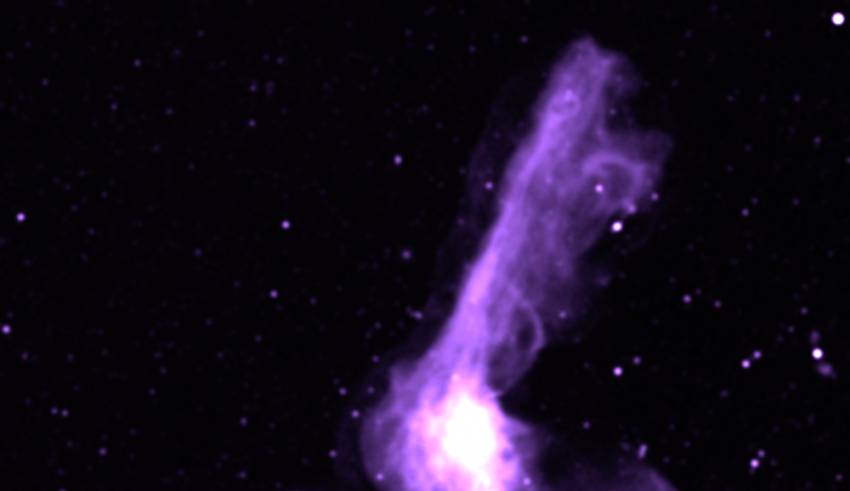
Supermassive black holes are gravitational powerhouses. When hot gas surrounding them is squeezed by gravity and electromagnetic fields, it can emit tremendous amounts of energy, including high-energy neutrinos.

A new study argues that our best chances of using atmospheres to find evidence of life is to broaden our search from focusing on planets like our own to include those with a hydrogen atmosphere.

The prominent X-shape of PKS 2014-55 is made up of two pairs of giant lobes consisting of hot jets of electrons. These jets spurt outwards from a supermassive black hole at the galaxy's heart.

The Hubble Space Telescope has captured two images showing Atlas, originally up to 180 metres across, has broken into as many as 30 pieces, each about the size of a house.

Astronomers studying what they thought was a double star system 1,000 light years from Earth in the southern constellation Telescopium stumbled on what must be a stellar mass black hole.

Astronomy is advancing to the point where we can see planets forming around young stars. This was an unthinkable only a few years ago. It was only two years ago that astronomers captured the first image of a newly-forming planet.

The surface of Jupiter's moon Europa features a widely varied landscape, including ridges, bands, small rounded domes and disrupted spaces that geologists call "chaos terrain."

Giant elliptical galaxies are not as likely as disk-shaped galaxies, such as our own Milky Way, to be cradles of technological civilizations, according to a recent U.S. paper.

A Milky Way magnetar called SGR 1935+2154 may have just massively contributed to solving the mystery of powerful deep-space radio signals that have vexed astronomers for years.

The universe is full of billions of galaxies. Why do we see so much structure in the universe today? A 10-year survey of tens of thousands of galaxies has provided a new approach to answering this fundamental mystery.

NASA recently announced the three companies that will be building lunar landing systems to take astronauts back to the Moon - SpaceX, Blue Origin, and Dynetics.

4 billion year old Nitrogen containing organic molecules has been discovered in Martian meteorites. This finding suggests a wet and organic-rich early Mars, which could have been habitable and favorable for life to start.

The object, called Fomalhaut b, was first announced in 2008. It was clearly visible in several years of Hubble observations that revealed it was a moving dot. Now it has vanished and scientists seek for a plausible explanation.

The system around HD 158259 star consists of an innermost large rocky planet (a “super-Earth”) and five small gas giants (“mini-Neptunes”) that have exceptionally regular spacing between them.

30 years ago the Hubble Space Telescope blasted off the launch pad aboard the space shuttle Discovery, ushering in a new era for astronomy that has transformed our understanding of the Universe around us.